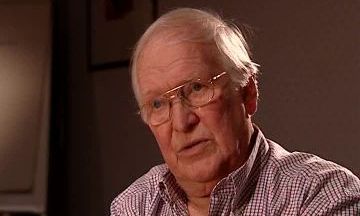I spent a year there while Hilary was finishing her degree. Indeed, she was in my class – I taught her. Also, this was 1946, and this was the time when all the young bucks were coming back from the war, married off, and children... desperate for knowledge. I have never, in all my teaching years, been sucked dry like an orange as I was in that first year, when I knew least, by these young men wanting to know. So, so that was learning how to teach, and I also got imprinted with research there. Not that I learned anything from the Professor. When I ever went to him with ideas he used to say, 'Oh, that's old stuff', and that's not the way to motivate anybody. But, anyway, he had a young PhD girl, Nancy somebody or other – I can't remember her second name – and she was working on a problem about the absorption of sugars from the gut, and there a Swiss physiologist, Verzar, was claiming that certain sugars, like glucose and fructose, which are reducing sugars, were selectively absorbed much faster than most other simple sugars. And his theory was that it was because they were phosphorylated, and so he claimed he had proof of this by using sodium iodoacetate as a poison to poison the phosphorylating enzyme. And, when treated with sodium iodoacetate, the selective absorption disappeared, and what Nancy was showing was that, in fact, the use of the substance just necrosed – killed off – the whole of the surface epithelium, and so Garry's argument was: 'Nothing to do with phosphorylation; has to do with epithelium'. But I remember asking her, but you know, 'What else is this poison doing? What's it doing to your blood pressure?' Didn't know. And, then because they couldn't measure blood pressure on these small animals at that time. So that was my first task: to learn how to measure blood pressure without a small instrument. But... so, I'm imprinted, then, right at the beginning, with something to do with the gut and something to do with the circulation, and these, as you know, are two ideas, which are two attitudes almost, that have haunted me for the rest of my life.





